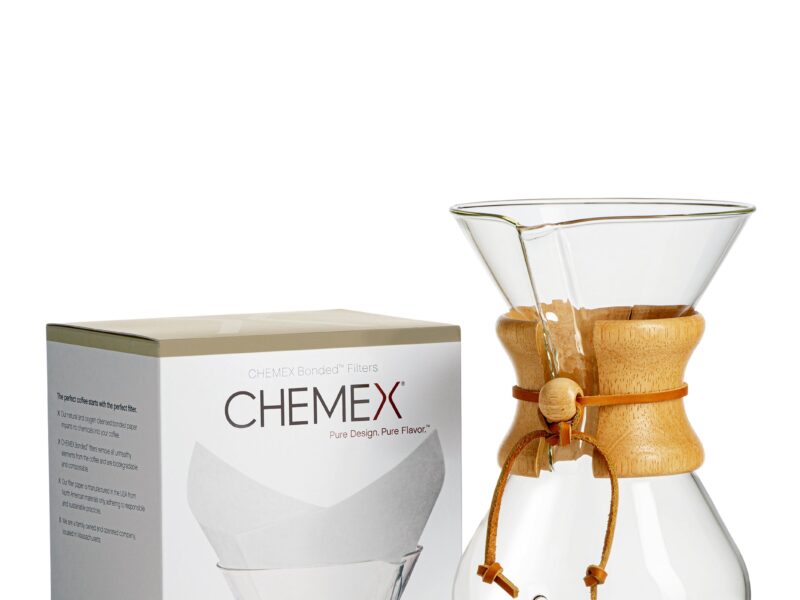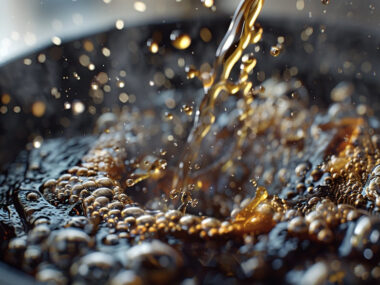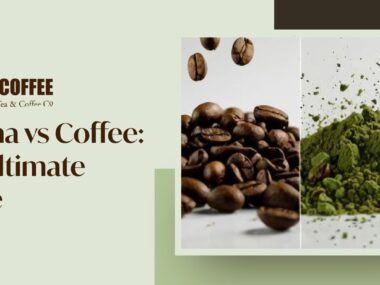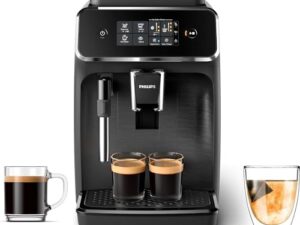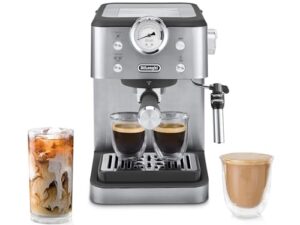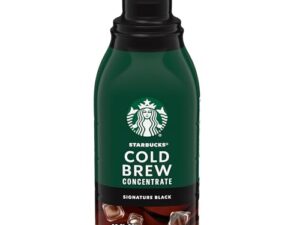Finding the best coffee without chemicals can be challenging. Many ask, what is the best coffee without chemicals for a healthier, flavorful cup?
Coffee lovers often worry about the chemicals in their favorite brew. Pesticides, artificial flavors, and preservatives can lurk in many brands. But fear not, there are coffee options free from these unwanted additives. Organic and naturally processed coffees offer a cleaner, pure taste.
These alternatives are grown without synthetic fertilizers or pesticides. They also avoid artificial chemicals in the roasting process. In this blog post, we’ll explore the best chemical-free coffee options. Learn how to enjoy your coffee with peace of mind. Discover brands and types that prioritize purity. Let’s dive into the world of clean, chemical-free coffee choices.
Natural Coffee Types
When thinking about the best coffee without chemicals, natural coffee types come to mind. These coffees are grown and processed without synthetic fertilizers, pesticides, or herbicides. This ensures a pure, rich flavor and a healthier choice for your daily brew. Let’s explore two popular types: Organic Coffee and Single-Origin Coffee.
Organic Coffee
Organic coffee is grown using natural methods. Farmers avoid synthetic chemicals, ensuring a cleaner product. This type of coffee is beneficial for your health and the environment. Here are some key points:
- Health Benefits: Free from harmful pesticides and chemicals.
- Environmental Impact: Promotes biodiversity and soil health.
- Flavor: Often richer and more complex.
Organic coffee farms use sustainable practices. They focus on maintaining healthy soil and ecosystems. This leads to better coffee plants and higher-quality beans. Here is a comparison of organic vs. conventional coffee:
| Organic Coffee | Conventional Coffee |
|---|---|
| Free from synthetic chemicals | Contains synthetic chemicals |
| Promotes biodiversity | May harm biodiversity |
| Healthier soil | Soil degradation |
| Rich, complex flavor | Standard flavor |
Choosing organic coffee supports sustainable farming practices. It also ensures you enjoy a cup of coffee that is both tasty and clean.
Single-origin Coffee
Single-origin coffee comes from one location. This could be a single country, region, or even a specific farm. These coffees offer unique flavors that reflect their place of origin. Let’s discuss the benefits:
- Unique Flavors: Distinct taste based on the region’s soil, climate, and farming methods.
- Transparency: Know exactly where your coffee comes from.
- Quality: Often higher quality due to specialized farming.
Single-origin coffee can be traced back to its exact source. This traceability ensures high standards and allows consumers to learn about the coffee’s journey. Here are some popular single-origin coffee regions:
| Region | Flavor Profile |
|---|---|
| Colombia | Balanced, mild, nutty |
| Ethiopia | Fruity, floral, complex |
| Sumatra | Earthy, spicy, full-bodied |
| Kenya | Bright, acidic, berry-like |
Single-origin coffee is perfect for those who appreciate distinct flavors. It allows you to explore the unique characteristics of different coffee-growing regions. Each cup tells a story of its origin.

Credit: jeremiahspick.com
Benefits Of Chemical-free Coffee
Choosing coffee without chemicals offers a wealth of benefits. Not only does it cater to those seeking healthier options, but it also supports a sustainable environment. Chemical-free coffee means no pesticides, herbicides, or artificial additives, ensuring a purer taste and better health. Discover the advantages of sipping on a cup of nature’s finest brew.
Health Advantages
Opting for chemical-free coffee can be a significant step towards better health. Consuming coffee grown without harmful chemicals reduces the risk of ingesting residues that may impact health negatively. Below are some health benefits:
- Lower risk of chronic diseases: Organic coffee has antioxidants that may reduce the risk of heart disease and certain cancers.
- Improved digestion: Without chemicals, coffee is less likely to irritate the stomach.
- Better mental health: Cleaner coffee means fewer toxins, potentially improving mood and cognitive function.
Here’s a comparison table highlighting the difference between chemical-free and conventional coffee:
| Aspect | Chemical-Free Coffee | Conventional Coffee |
|---|---|---|
| Antioxidants | High | Moderate |
| Toxin Levels | Low | Higher |
| Stomach Irritation | Reduced | Common |
Environmental Impact
Chemical-free coffee supports sustainability. Farming without synthetic chemicals protects the ecosystem. This method fosters biodiversity and preserves soil health. Here are some environmental benefits:
- Reduced pollution: Natural farming methods prevent chemical runoff into water sources.
- Enhanced biodiversity: Organic farms often support diverse plant and animal life.
- Better soil health: Organic practices enhance soil quality, making it more fertile.
Consider these effects of chemical-free coffee on the environment:
- Protects wildlife habitats.
- Reduces carbon footprint.
- Promotes sustainable farming.
Choosing chemical-free coffee not only benefits personal health but also nurtures the planet.
Top Brands To Consider
Choosing the best coffee without chemicals can be a daunting task. With so many brands on the market, it’s hard to know where to start. To help you, we’ve put together a list of the top brands to consider. These brands offer high-quality, chemical-free coffee that is both delicious and safe for your health.
Sustainable Brands
When looking for coffee without chemicals, it’s important to consider sustainable brands. These companies prioritize the environment and ethical farming practices. Here are some top sustainable brands:
- Kicking Horse Coffee: This brand is known for its organic and fair-trade coffee. They use only high-quality beans and avoid harmful pesticides and chemicals.
- Death Wish Coffee: This company offers organic coffee that is free from chemicals. They are also committed to fair-trade practices and sustainable farming.
- Equal Exchange: This brand focuses on fair-trade and organic coffee. They work directly with small farmers to ensure ethical practices and high-quality beans.
Here is a quick comparison of these brands:
| Brand | Organic | Fair-Trade | Chemical-Free |
|---|---|---|---|
| Kicking Horse Coffee | Yes | Yes | Yes |
| Death Wish Coffee | Yes | Yes | Yes |
| Equal Exchange | Yes | Yes | Yes |
Local Roasters
Supporting local roasters is another great way to find coffee without chemicals. These small businesses often focus on quality over quantity. Here are some local roasters to consider:
- Blue Bottle Coffee: Based in California, this roaster offers fresh, organic coffee. They avoid using chemicals and focus on high-quality beans.
- Intelligentsia Coffee: This Chicago-based roaster is known for its direct trade practices. They source their beans directly from farmers, ensuring no chemicals are used.
- Stumptown Coffee Roasters: Located in Portland, Oregon, Stumptown is famous for its organic and chemical-free coffee. They work closely with farmers to maintain high standards.
Let’s look at how these local roasters compare:
| Roaster | Location | Organic | Direct Trade | Chemical-Free |
|---|---|---|---|---|
| Blue Bottle Coffee | California | Yes | No | Yes |
| Intelligentsia Coffee | Chicago | No | Yes | Yes |
| Stumptown Coffee Roasters | Portland | Yes | Yes | Yes |

Credit: time2thrive.com
Brewing Methods
Finding the best coffee without chemicals involves more than just selecting organic beans. The brewing method plays a crucial role in maintaining the purity and flavor of your coffee. Using traditional brewing methods ensures you get a rich, chemical-free cup every time. Let’s explore two popular methods: French Press and Pour Over.
French Press
The French Press is a classic brewing method known for its simplicity and full-bodied flavor. Using a French Press ensures that you get the most out of your coffee beans without introducing any unwanted chemicals.
Here are the steps to brew coffee using a French Press:
- Measure Coffee: Use a 1:15 ratio of coffee to water. For example, use 1 ounce of coffee for every 15 ounces of water.
- Grind Beans: Use a coarse grind. It should look like sea salt.
- Boil Water: Heat water to about 200°F (93°C).
- Add Coffee: Place the ground coffee in the French Press.
- Add Water: Pour hot water over the coffee grounds.
- Stir: Stir the mixture gently.
- Steep: Place the lid on and let it steep for 4 minutes.
- Press: Press the plunger down slowly and evenly.
- Serve: Pour the coffee into your cup and enjoy.
The French Press method is ideal for those who prefer a richer, more robust flavor. It allows the natural oils from the coffee beans to remain in the brew, enhancing the taste.
Pour Over
The Pour Over method is another excellent way to brew coffee without chemicals. It gives you more control over the brewing process, allowing you to extract the best flavors from your coffee beans.
Follow these steps to make Pour Over coffee:
- Measure Coffee: Use a 1:17 ratio of coffee to water. For example, use 1 ounce of coffee for every 17 ounces of water.
- Grind Beans: Use a medium-coarse grind. It should resemble sand.
- Boil Water: Heat water to about 200°F (93°C).
- Prepare Filter: Place a paper filter in the dripper and rinse with hot water. This removes any paper taste.
- Add Coffee: Put the ground coffee into the filter.
- Bloom: Pour a small amount of hot water over the grounds to bloom. Let it sit for 30 seconds.
- Pour Water: Slowly pour the remaining water in a circular motion over the grounds.
- Serve: Once the water has passed through the coffee grounds, pour the coffee into your cup and enjoy.
The Pour Over method highlights the delicate flavors of the coffee. It provides a clean and crisp cup, free from chemicals. This method is perfect for those who appreciate a lighter, more nuanced coffee experience.
Flavor Profiles
Choosing the best coffee without chemicals is about more than health. It’s also about taste. Flavor profiles in coffee vary widely. They depend on the roast level. Understanding these profiles helps you pick the perfect cup. Let’s explore the distinct flavors of light and dark roasts.
Light Roast
Light roast coffee is known for its bright and vibrant flavors. The beans are roasted for a shorter time. This keeps more of the original taste of the coffee bean. Here are some key characteristics of light roasts:
- Acidity: Light roasts have a higher acidity. This gives a tangy taste.
- Flavor Notes: You can taste fruity and floral notes. Common flavors include citrus, berries, and jasmine.
- Body: The body is light and tea-like. It feels thinner on the palate.
- Aroma: The aroma is often sweet and fragrant.
| Characteristic | Description |
|---|---|
| Acidity | High, tangy |
| Flavor Notes | Fruity, Floral |
| Body | Light, Tea-like |
| Aroma | Sweet, Fragrant |
Light roasts are often preferred by those who enjoy a more complex and nuanced coffee. They offer a refreshing and lively cup. Perfect for those who appreciate the diverse flavors of the coffee bean.
Dark Roast
Dark roast coffee offers a different experience. The beans are roasted longer. This brings out deep and rich flavors. Here are some characteristics of dark roasts:
- Acidity: Dark roasts have lower acidity. The taste is smoother and less sharp.
- Flavor Notes: You can taste chocolate, nuts, and caramel. Some dark roasts have smoky or spicy notes.
- Body: The body is full and heavy. It feels robust on the palate.
- Aroma: The aroma is strong and bold.
| Characteristic | Description |
|---|---|
| Acidity | Low, Smooth |
| Flavor Notes | Chocolate, Nuts, Caramel |
| Body | Full, Heavy |
| Aroma | Strong, Bold |
Dark roasts are ideal for those who enjoy a robust and intense coffee. The flavors are rich and deep. Great for those who love a strong, full-bodied cup. A comforting choice that delivers a powerful coffee experience.
Choosing The Right Beans
Choosing the right beans is crucial for enjoying the best coffee without chemicals. The type of bean you select can significantly impact the flavor and quality of your coffee. Here, we explore some factors to consider when choosing your coffee beans.
Arabica Vs. Robusta
When selecting coffee beans, you typically have two main types to choose from: Arabica and Robusta. Each type offers unique characteristics that can affect your coffee experience.
Arabica:
- Known for its smooth, mild flavor.
- Less bitter than Robusta.
- Contains less caffeine.
- Generally grown at higher altitudes.
Robusta:
- Stronger, more bitter taste.
- Higher caffeine content.
- More resilient to pests and diseases.
- Typically grown at lower altitudes.
Choosing between Arabica and Robusta depends on your preference for taste and caffeine content. Arabica beans are often favored for their smooth and complex flavors, while Robusta beans are preferred for their strong and bold taste.
| Characteristics | Arabica | Robusta |
|---|---|---|
| Flavor | Smooth, Mild | Strong, Bitter |
| Caffeine | Less | More |
| Growing Altitude | Higher | Lower |
Freshness Matters
Freshness is a key factor in achieving the best coffee without chemicals. Freshly roasted beans provide a richer and more vibrant flavor compared to stale ones.
Signs of Fresh Coffee:
- Aromatic smell.
- Bright and lively flavors.
- Beans with a shiny, oily surface.
To ensure your coffee stays fresh, consider the following tips:
- Buy whole beans: Whole beans stay fresh longer than pre-ground coffee.
- Store properly: Keep beans in an airtight container away from light, heat, and moisture.
- Grind as needed: Grind beans just before brewing to preserve their freshness.
By focusing on freshness, you can enjoy a coffee that is not only free from chemicals but also bursting with natural flavors.
Storing Coffee Properly
Coffee lovers often seek out the best coffee without chemicals. But, did you know that storing your coffee properly is just as important? Proper storage ensures your coffee stays fresh and pure, enhancing your overall experience. Let’s dive into some essential tips for storing your coffee properly.
Avoiding Contamination
One of the biggest threats to your coffee’s purity is contamination. Even the best coffee can lose its quality if not stored correctly. Here are some tips to avoid contamination:
- Use airtight containers: Always store coffee in airtight containers. This prevents exposure to air, which can cause oxidation.
- Avoid plastic: Use glass or ceramic containers. Plastic can absorb odors and chemicals, which can transfer to your coffee.
- Keep away from strong odors: Coffee beans can absorb odors from their surroundings. Store them away from spices, cleaning products, and other strong-smelling items.
Here’s a table summarizing the best storage containers:
| Container Type | Pros | Cons |
|---|---|---|
| Glass | Non-reactive, odor-resistant | Can break easily |
| Ceramic | Non-reactive, durable | Can be heavy |
| Metal | Durable, airtight | Can react with coffee |
By following these tips, you can keep your coffee free from contamination, ensuring a pure and enjoyable cup every time.
Maintaining Freshness
Freshness is key to a great cup of coffee. To maintain the freshness of your coffee, consider the following:
- Store in a cool, dark place: Heat and light can degrade coffee. Keep your coffee in a pantry or cupboard, away from sunlight and heat sources.
- Buy whole beans: Whole beans stay fresh longer than ground coffee. Grind only what you need for each brew.
- Avoid the freezer: Freezing coffee can cause moisture to build up, which affects the flavor. Instead, store coffee at room temperature.
Here’s a quick tip: Always check the roast date on your coffee. Freshly roasted beans are best used within two weeks. If you can’t finish your coffee within this time, consider buying smaller quantities more frequently.
By implementing these storage practices, you can maintain the freshness of your coffee, enhancing its natural flavors and aromas. Remember, the way you store your coffee can significantly impact its taste and quality. Happy brewing!
Credit: m.facebook.com
Consumer Tips
Choosing the best coffee without chemicals can be a daunting task. With so many brands and labels, it is hard to know which ones are truly free from harmful substances. This section provides consumer tips to help you make informed decisions. Learn how to read labels and understand certifications that guarantee chemical-free coffee.
Reading Labels
Reading labels is crucial when selecting coffee without chemicals. The information on the label can reveal a lot about the product’s quality and safety. Here are some key points to look for:
- Ingredients: Ensure the coffee is 100% pure Arabica or Robusta beans. Avoid products with additives or flavorings.
- Processing Method: Look for terms like “shade-grown,” “sun-dried,” or “wet-processed.” These methods often indicate a more natural approach.
- Country of Origin: High-quality coffee often comes from regions known for their coffee production, such as Colombia, Ethiopia, or Brazil.
- Roasting Date: Freshness matters. Choose coffee with a recent roasting date for the best flavor and quality.
Additionally, be wary of vague terms like “natural” or “gourmet.” These words are often used for marketing and do not guarantee the absence of chemicals. A well-detailed label reflects transparency and trustworthiness, making it easier to select a safe and high-quality coffee.
Certifications To Look For
Certifications provide an extra layer of assurance that the coffee you are buying is free from harmful chemicals. Some important certifications to look for include:
- USDA Organic: This certification ensures the coffee is grown without synthetic fertilizers, pesticides, or genetically modified organisms (GMOs).
- Fair Trade: Fair Trade-certified coffee supports sustainable farming practices and fair wages for farmers. It also promotes environmentally friendly growing techniques.
- Rainforest Alliance: This certification emphasizes biodiversity conservation and sustainable livelihoods for coffee farmers. It ensures the coffee is grown using eco-friendly methods.
- Bird-Friendly: Certified by the Smithsonian Migratory Bird Center, this label guarantees shade-grown coffee that preserves bird habitats and promotes biodiversity.
Choosing coffee with these certifications can make a significant difference. They not only guarantee the absence of chemicals but also support ethical and sustainable practices in the coffee industry. Look for these labels to enjoy a cup of coffee that is both safe and socially responsible.
Frequently Asked Questions
Which Coffee Has The Least Amount Of Chemicals?
Organic coffee has the least amount of chemicals. It’s grown without synthetic pesticides, herbicides, or fertilizers. Choose certified organic brands for the best options.
What Is The Safest Coffee To Drink?
The safest coffee is organic and pesticide-free. Choose brands with third-party certifications like USDA Organic. Avoid added sugars and artificial flavors.
What Is The Cleanest Coffee To Buy?
The cleanest coffee to buy is organic, shade-grown, and fair-trade certified. These options ensure minimal pesticides and ethical practices.
What Is The Natural Force Clean Coffee?
Natural Force Clean Coffee is a high-quality coffee made from organic, non-GMO beans. It is free from pesticides and mycotoxins, ensuring a pure and clean taste.
Conclusion
Choosing the best coffee without chemicals is vital for health-conscious individuals. Organic and natural coffee options provide a safer, healthier choice. These coffees ensure a pure taste without harmful additives. Remember to check labels for organic certifications. This guarantees you’re getting the best quality.
Enjoy your coffee, knowing it’s clean and chemical-free. Explore different brands to find your favorite. Savor every cup with peace of mind. Happy brewing!
